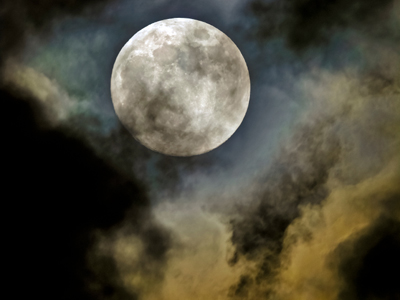In middle school you'll learn a little about the Earth’s Moon, as well as the phases of the Moon. One of those phases is known as the Full Moon. A Full Moon is when the Moon is completely illuminated by the Sun. The illumination occurs when the Moon is opposite of the Sun which then makes the Moon appear bigger and closer to the Earth. However, did you know that the Full Moon is also known by many other names? Each Full Moon is associated with a specific month. Among them are:
The Blue Moon
The Wolf Moon
The Snow Moon
The Worm Moon
The Pink Moon
The Flower Moon
The Strawberry Moon
The Buck Moon
The Sturgeon Moon
The Harvest Moon
The Hunter’s Moon
The Beaver Moon
The Cold Moon
The Blue Moon: Each month you will have a Full Moon but in those months where two Full Moons occur, the second Full Moon is referred to as the “Blue Moon.” As having a second Full Moon in a month occurs roughly every 2 to 3 years, it is not as common so the phrase “Once in a Blue Moon” refers to something that happens only once in a while or not often.
The Wolf Moon: This Full Moon occurs in January and received its name from Native American Indians. In the cold of winter the wolves would often howl excessively during January’s Full Moon, hence the Indians began to call it the Wolf Moon.
The Snow Moon: This Full Moon occurs in February. Because February generally sees the most snow fall, the Moon was given the name “Snow Moon”. Native American Indians also referred to the February Full Moon as the “Hunger Moon” because hunting was difficult and little food could be found during the month.
The Worm Moon: This Full Moon occurs in March. As the temperatures begin to rise and the ground begins to thaw, worms make their way up to the surface and birds begin to return from their winter migration. Hence, the Worm Moon was named by Native Americans. However, a number of other names were also given to the Full Moon of March. These include the “Full Crow Moon,” the “Full Crust Moon” and the “Full Sap Moon.” Each name refers to occurrences in nature during the re-birth of life during springtime.
The Pink Moon: This Full Moon occurs in April and refers to the blooming of flowers in the springtime. The April Full Moon is also known as the “Full Sprouting Grass Moon,” the “Egg Moon” and the “Full Fish Moon.”
The Flower Moon: This Full Moon occurs in May and is used to describe the abundance of blooming flowers. The May Full Moon is also known as the “Full Corn Planting Moon” and the “Milk Moon.”
The Strawberry Moon: This Full Moon occurs in June because June is generally the month in which strawberries are ripe for picking. In Europe, the June Full Moon is referred to as the “Rose Moon.”
The Buck Moon: This Full Moon occurs in July as this is the month when bucks begin to show their antlers. The July Full Moon is also known as the “Full Thunder Moon” for the number of thunderstorms. Others refer to it as the “Full Hay Moon” as the hay is fully high by this time.
The Sturgeon Moon: This Full Moon occurs in August. As the sturgeon fishes of the Great Lakes are plentiful at this time, the Full Moon’s name reflects this occurrence. Native Americans also refer to the Full Moon of August as the “Full Red Moon” because of the reddish haze that is often seen around the Moon during the month. Other names for the August Full Moon include the “Green Corn Moon” and the “Grain Moon.”
The Harvest Moon: This Full Moon occurs in September and gets its name because of the season where harvesting begins in earnest.
The Hunter’s Moon: This Full Moon occurs in October. By this time the deer are fattened and can provide a good source of winter food. Hence, October is known as the hunter’s month, lending this tradition to the Moon’s name.
The Beaver Moon: This Full Moon occurs in November and is generally the month where hunters set out beaver traps. The November Full Moon is also known as the “Frosty Moon.”
The Cold Moon: This Full Moon occurs in December when the cold winds begin to start to blow in. The December Full Moon is also known as the “Moon Before Yule” and the “Full Long Nights Moon.”








